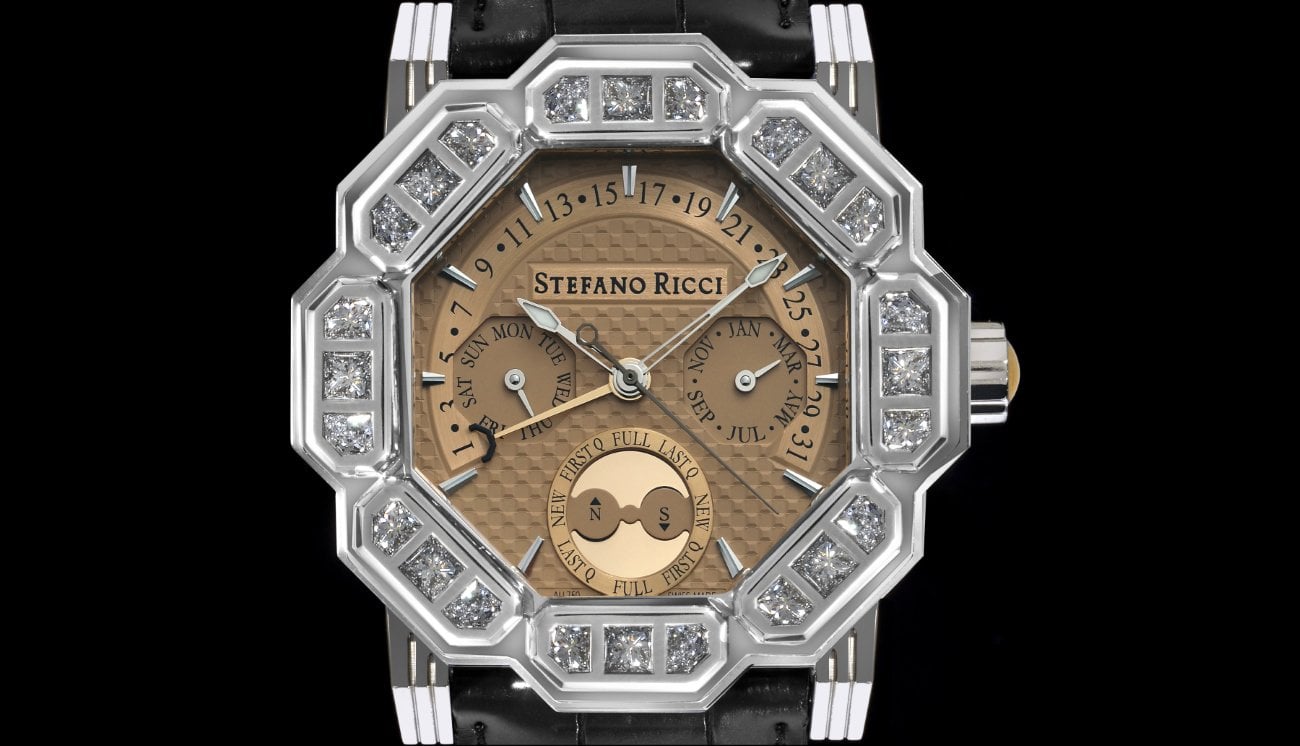tefano Ricci, the Florentine luxury lifestyle brand for men, presents its first range of watches: Octagon. The collection is designed with theatrical geometry on eight sides overlooking the spectacle of time.
For his debut in the watchmaking field, Stefano Ricci decided to produce the Octagon collection in three models: a Perpetual Calendar, an Annual Calendar and a Chronograph.
Each one is made in a limited series of 10 pieces with the manufacturing run also adopted for the Diamond Lux Limited Edition versions, which are set with diamonds.
The octagonal case in polished white gold is the same for the three timepieces, measuring 45.5 mm in diameter and 14.8 mm in thickness, including the cuvette. The middle case traces the sides of the octagon connected by angular recesses in the shape of an inverted “V”, all without interruption, accompanied by a double parallel linear incision.
This is interrupted by the crown, which is well-sized and pressure-closed, with deep engravings on the edge and finished with a cabochon: sapphire for the Chronograph, onyx for the Perpetual Calendar and citrine for the Annual Calendar; the engravings are also found on the straight lugs, winding around the middle case and angled longitudinally to increase its ergonomics on the wrist.
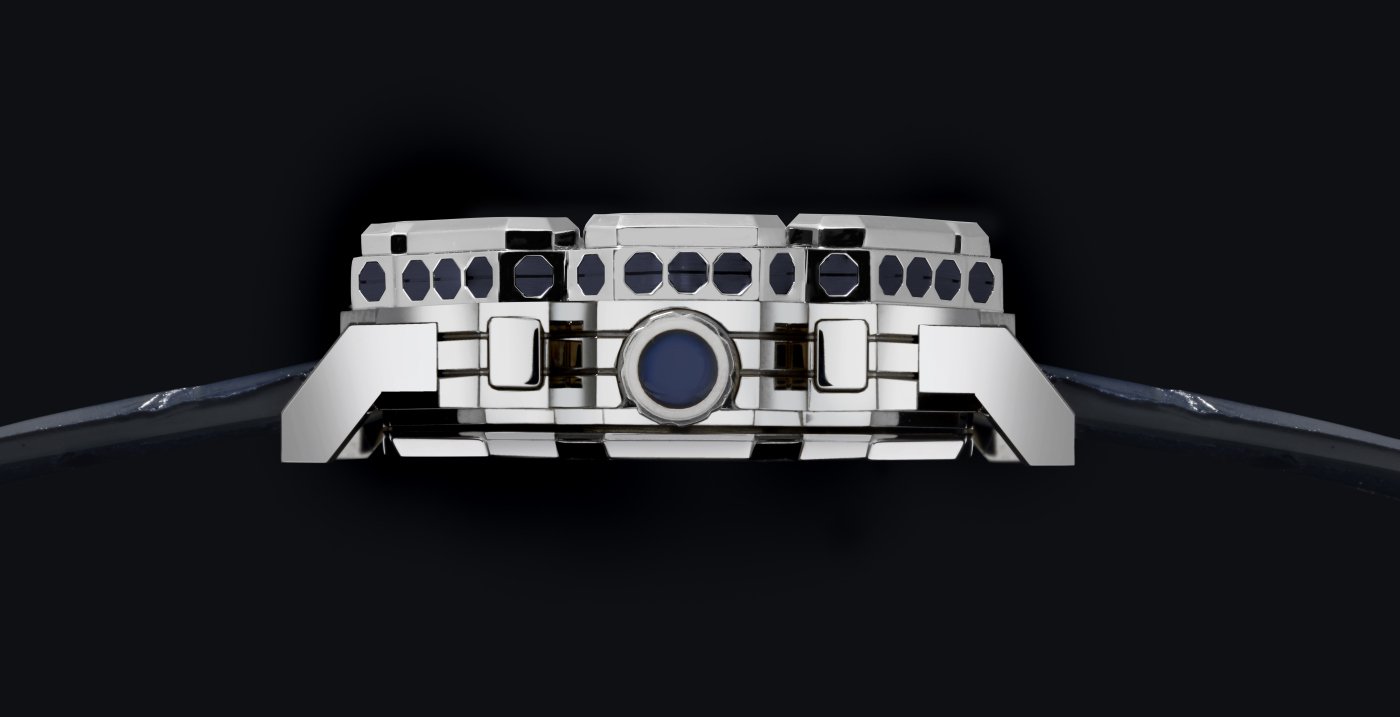
The bezel consists of a base, which follows the profile of the middle case, studded on its outer edge with 40 octagonal screws with horizontal notches, and eight trapezoidal elements soldered on to the eight sides, with each one defined by octagonal screws with vertical notches, the one in the centre being oversized.
The hand-stitched crocodile strap features a white gold folding clasp, whose octagonal buckle bears eight radial-notched screws.
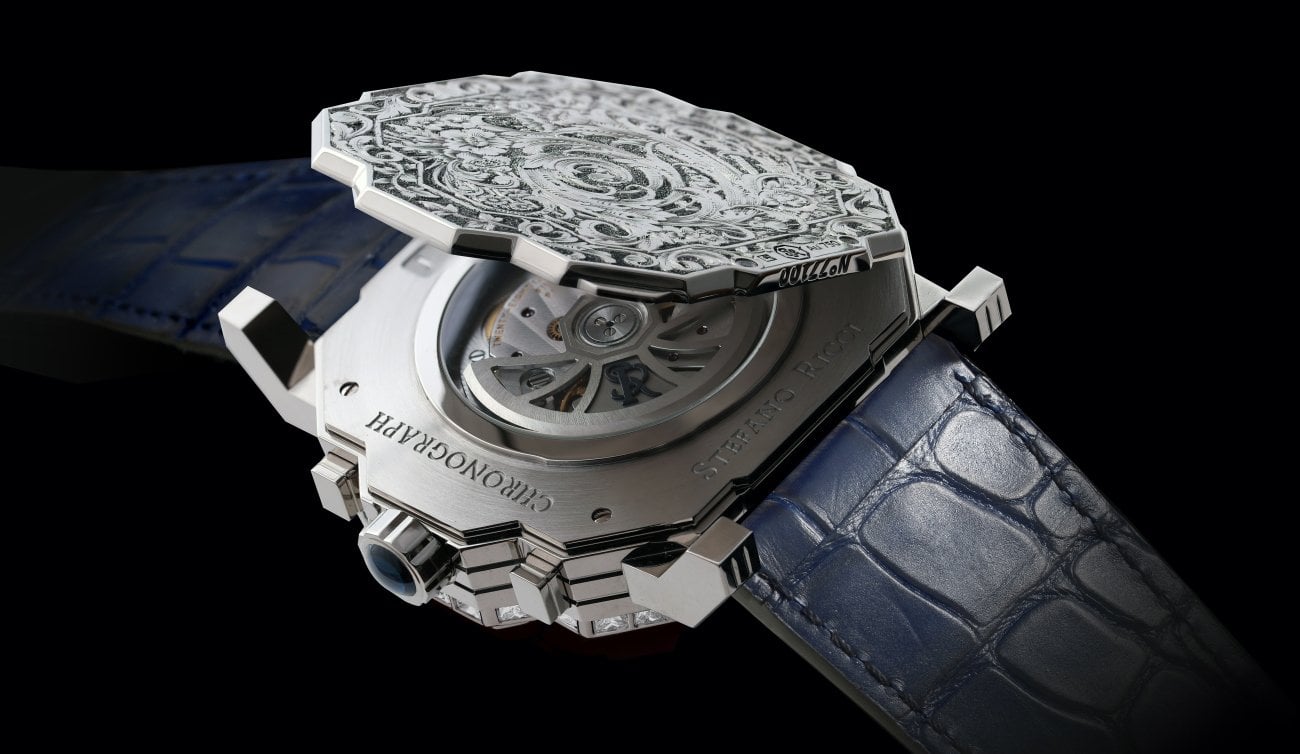
Attention to detail is also found on the watch back, engraved by master craftsmen using the inglesina, or “English Scroll”, technique which enhances the artisan workmanship. Lines and dots create floral themes in a marked, fascinating contrast of light-and-shade effects. Stefano Ricci has opted to transfer similar savoir-faire to the rear cuvette of his watches, which is hinged on the back. A fully-fledged work of art which ensures every single watch is highly customised.
Exclusively for the 10 Diamond Lux Limited Edition Perpetual Calendar watches, this engraving depicts animals in nature, such as the eagle, leopard, elephant and lion, according to a dynamic symmetry, created by the master goldsmiths of Stefano Ricci.
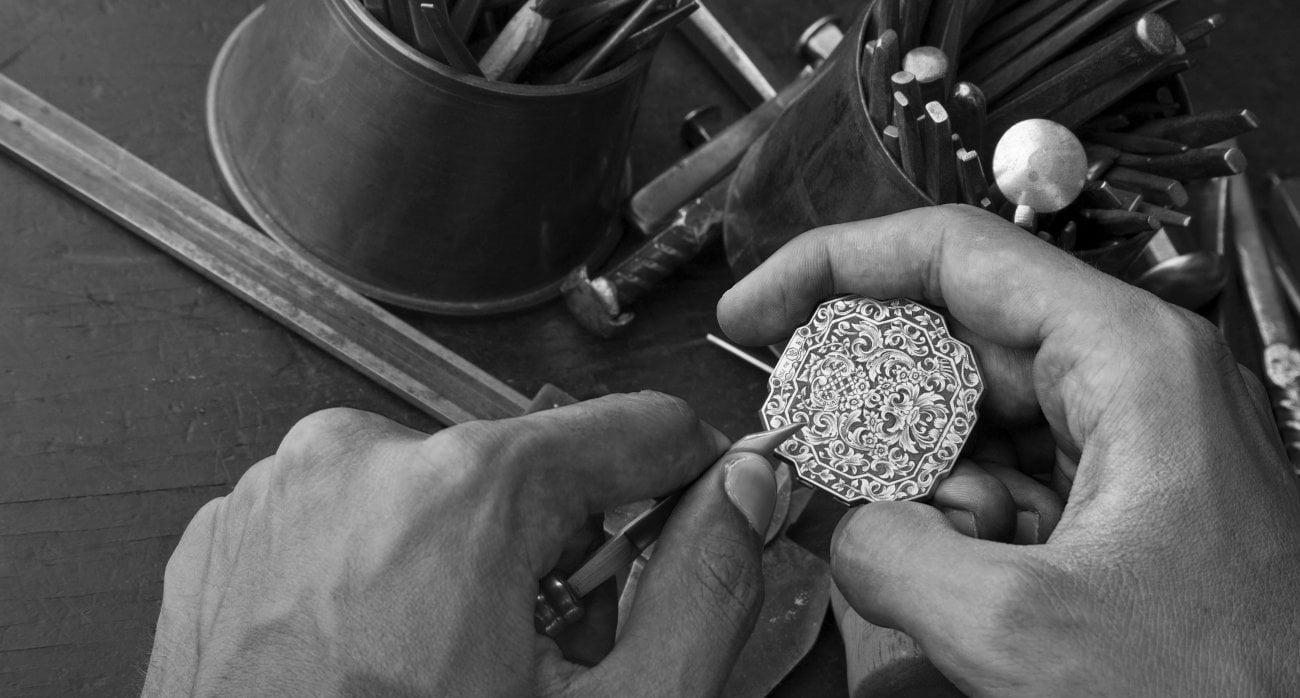
As regards the movements, Stefano Ricci has sought out the highest level of expression, selecting a haut-de-gamme manufacturer in Fleurier, a village in Val-de-Travers (Neuchâtel canton). The movements are all modular, featuring the same self-winding base, operating at 28,800 vibrations/hour, with a variable inertia balance wheel (flat spiral) and two barrels arranged in sequence to guarantee a power reserve of 50 hours (dropping to 42 hours in the chronograph, in the event that the stopwatch is used).
The platinum oscillating weight, customised with the Stefano Ricci logo, is unidirectional, skeletonised, and seated on a ceramic ball bearing, so as to optimise the automatic winding even in the case of limited wrist movements.
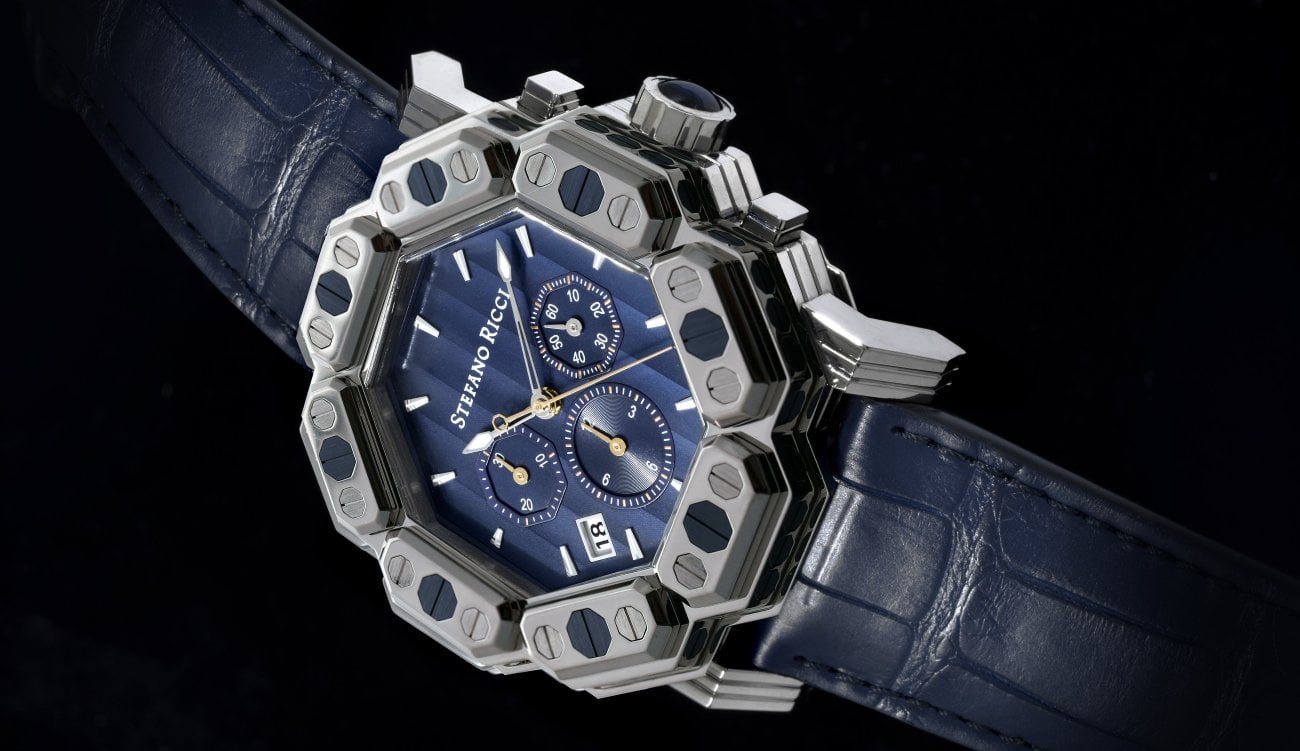
Moving on to the various complications, the Chronograph features a Dubois-Dépraz tri-compax module, with sorting of the stopwatch functions via horizontal engagement cams, with small seconds in the 3 o’clock position. Both the Perpetual Calendar and the Annual Calendar feature a retrograde display of the analogue date with a central hand (the instantaneous return of the sphere at the end of the month is ensured by a spiral spring), and the astronomical moon phases (correction of one day every 122 years), in both the Southern and the Northern hemispheres.
On the Perpetual Calendar, the month and day of the week are indicated in a window (with underlying discs), as is the leap cycle, by virtue of the application of a programme wheel of the months built on 48 notches, while they are displayed analogically on the Annual Calendar. Obviously, the leap year cycle is not envisaged in the annual calendar, as its distinction lies in automatically indicating the month, day of the week and the exact date for months with 30 and 31 days, requiring only one correction each year, on the 1st of March.
This ingenious system conceals extremely sophisticated technology, and a further distinguishing element: the module adopted in the Stefano Ricci Annual Calendar is calibrated on a standard duration of 29 days in February so that it is not necessary to make any correction in a leap year, while in the case of non-leap years, it is only necessary to advance the date by one day.
If the Perpetual Calendar is worn every day, it will not need any adjustment of the date, day, month or year until 28th February 2100. According to a rule of the Gregorian calendar, codified on mathematical criteria, the years whose numbering is a multiple of 100 are leap years only if the number is also a multiple of 400: so 2100, 2200 and 2300 will not be leap years, and so on.
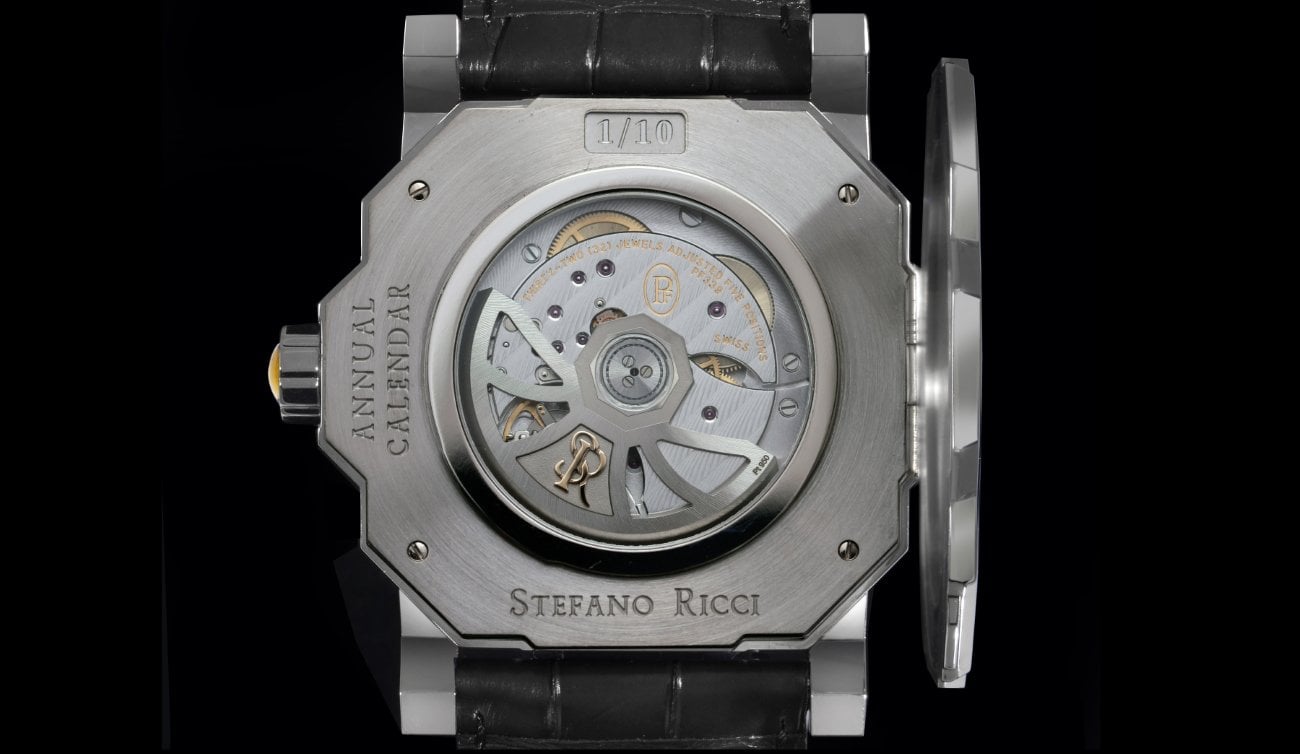
The dials of the three Stefano Ricci Octagon models have three different colours and finishes: the base is in 3N gold for the Perpetual and Annual Calendars, and in brass for the Chronograph; the Javelin hands are in steel, rhodium-plated or gilded with an arrowhead tip finished in SuperLuminova, like the central sphere of the second hand, which has an octagonal counterweight.
The dial of the Perpetual Calendar is black nickel-plated, with a guilloché finish depicting a geometric pattern; the circular arc of the retrograde date indicator, in relief with white decal numbers, is circular satin-finished (the indication is made by a central satin-finish hand with a white-lacquered “half octagon” tip), while the windows of the day and month display are in gilded brass, satin-finished and polished. The round window of the leap year cycle is in the 12 o’clock position, and the lunar phases in the 6 o’clock position have a gilded brass frame, background in “Galaxy” blue aventurine, and the moons in 4N gold.
The geometric indices – also in the Annual Calendar – are faceted and applied in gold, diamond-coated and finished with SuperLuminova, while they are in rhodium-plated brass in the Chronograph.
The gold-coloured dial of the Annual Calendar is guilloché finished with a “damier” pattern and the “half octagon” tip of the retrograde date-indicator hand, on a satin-finish arc with black-painted numerals, is lacquered in black. The small windows indicating the month (in the 3 o’clock position) and the day of the week (in the 9 o’clock position) are carved and octagonal on the opal background; the frame of the moon-phase indicator in the 6 o’clock position is in satin-finish gilded brass, the background in polished 4N gold, and the “Galaxy” blue aventurine moons are topped with a double-disc element in opal-finished gold.

Lastly, the dial of the Chronograph is galvanically treated in “Abyss” blue, with Côtes de Genève finish, and has the auxiliary sub-dials of the small seconds in the 3 o’clock position, and the stopwatch minutes in the 9 o’clock position, which are octagonal and have an opal background; the one indicating the stopwatch hours, in the 6 o’clock position, is circular with an azurée interior.
The date window, in rhodium-plated brass, is placed between the 7 and 8 o’clock positions. A further touch of colour is bestowed by the 4N gold dust used to outline the reference indices of the inner counters.
Each of the three complications proposed by Stefano Ricci also comes in a diamond version, also made in a limited edition of only 10 pieces.
